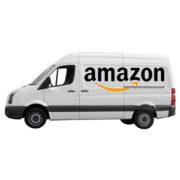Can You Meet and Exceed Your Customer’s Delivery Expectations?
You’d better. Amazon can.
According to figures by McKinsey.com, by March 2017, 60% of Amazon customers were on Prime. Those 80 million customers spend on average $1300.00 vs $700.00 from non-members annually.
Almost every day Amazon is opening new fulfillment centers and are, as one would imagine, super high performing. Items are picked, packed, and ready to ship, literally 2 hours after an order is received.
If you’re thinking that’s because Amazon is at the forefront of robotics and automation systems, you would be correct. Suffice it to say, Amazon leads, the rest of the industry follows. And fast.
Why, at this very moment, Amazon is developing a network of e-com distribution centers to allow next day delivery to 90% of the US population.
Naturally to stay competitive, retailers are finding themselves in the position to have to ramp up their service levels, fully expecting their suppliers to take on that burden right along with them. A direct implication being, stiff penalties imposed for non-compliance. These penalties are becoming more and more a norm in the industry, causing some pain for suppliers.
What if I told you that these penalties could end up costing these suppliers up to $5 billion a year?
Your Supply Chain performance makes a difference folks. Look at it this way; this could be a real opportunity for manufacturers. I mean, what if you could leave your competitors in the dust by performing 95% on time, or better?
If you think this will be easy, it won’t. This will take strong plans, real world opportunities that work efficiently, reliably and quickly. It’ll take a combination of new technologies and good, old fashioned discipline.
We must invest in state of the art robotics & automation, & smart IT tools that can track performance.
Your next carrier contracts must reflect carrier performance metrics and compliance in order to meet these new standards.
The answer belongs in your commitment to taking the time, effort and investment to be a leader in building processes today. That will enable you to meet the customer expectations of tomorrow.
Are you in?


